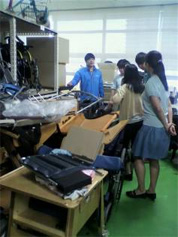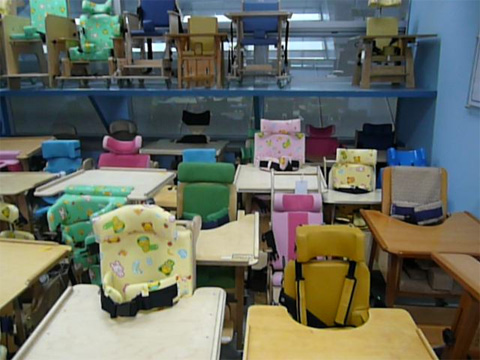Disabilities, Supportive Technology, Communication, ...and Art
In Seoul, Korea, from June 30 to July 3, the Research Center for Ars Vivendi of Ritsumeikan University held various important workshops which contribute to the support for the people with disabilities. We discussed multifarious problems concerning the supporting technology, barrier free, and art for the people with disabilities. Ms. Hyosuk Ahn, who is a graduate student of the Graduate School of Core Ethics and Frontier Sciences of Ritsumeikan University as well as a member of the “Switch-Ken” (Switch Study Group), coordinated these workshops. Eight students and researchers including our program member Prof. Yoko Matsubara took part in these projects. The “Switch-Ken” is a group in which our graduate students and postdoctoral fellows make “switches” to support communications of the people with severe disabilities, by collaborating with NPO “Ar”.
On June 30, 2011, we visited the Korea Disabled People's Development Institute, and Gyeong Gi-Do Assistive Technology Research and Assistance Center, and exchanged the information on employment, barrier free, and supportive technology of the people with disabilities. According to Mr. Kon from the Korea Disabled People's Development Institute in Seoul (Figure 1), although the interest in barrier free has arisen in Korea, the supportive technology that facilitates movements and expressions of the people with disabilities are mostly imported from abroad. The members of the “Switch-Ken” offered valuable information on the communication tools for the people with severe disabilities, and they promised future collaborations with the institution (Figure 2).
Gyeong Gi-Do Assistive Technology Research & Assistance Center showed us various supportive tools. (Figure 3 & 4)
Gyeong Gi-Do Assistive Technology Research & Assistance Center, founded in 2004, aims at “giving wings to the life of the people with disabilities and the aged. The center owns as many as 1000 supportive tools right now. The center, which consists of about 300 professional rehabilitation engineers, offered us a lot of valuable practical knowledge. From this exchange onward, the Research Center for Ars Vivendi and the “Switch-Ken” keep cooperating with the two institutions.
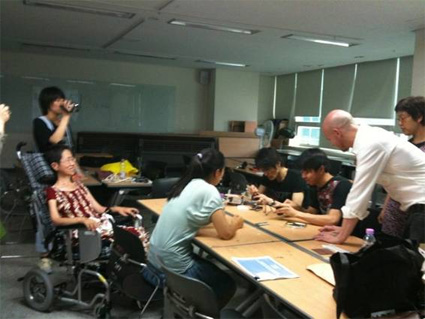
Figure 5: International Workshop: Art and Assistive Technology (Ms. Hyosuk Ahn, her mother Ms. Dosin Shin, and other members of the “Switch-Ken” in Hongik University, Korea)
From July 2 to 3, we held the International Workshop, entitled “Art and Assistive Technology” at Hongik University in Seoul, Korea with the world-famous artist, James Powderly (Figure 5). Prof. Powderly is known as one of the representative members who have invented EyeWriter1.0 and 2.0, the supportive technology that helps ALS patients projecting their gaze onto buildings outside. He started this project by supporting the graphic artist TEMPT who suffers from ALS.
On July 2, Ms. Yui Hasegawa, a graduate student of the Graduate School of Core Ethics and Frontier Sciences, Ritsumeikan University as well as a member of the “Switch-Ken”, presented an English paper on the significance of their support projects for the communication of ALS people. Ms. Hyosuk Ahn, who came from Korea to Japan to study at Ritsumeikan University, also presented an English paper on how Korean ALS patients currently use communication support tools. After these presentations, we discussed how we can improve supportive technology and how we can spread them to people with disabilities (Figure 6).
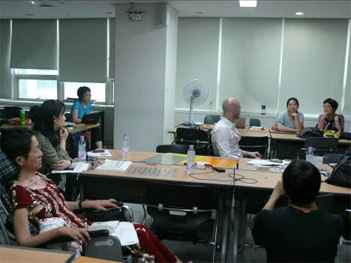
Figure 6: Our discussions after Ms. Hasegawa's and Ms. Ahn's presentations
In the afternoon in July 2, we asked Prof. Powderly to comment on our own-made EyeWriter1.0 (Figure 7)
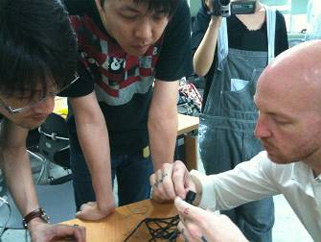
Figure 7: Examination of EyeWriter1.0 by Dr. Yoshitaro Hotta, Mr. Shinsuke Yamamoto, the members of the “Switch-Ken” as well as Prof. Powderly
According to Prof. Powderly, EyeWriter1.0 is not user-friendly as it is very difficult for patients to operate. EyeWriter2.0 was invented in order to improve these defects. The member of the “Switch-Ken” tried constructing EyeWriter2.0 with Prof. Powderly in July 3. (Figure 8)
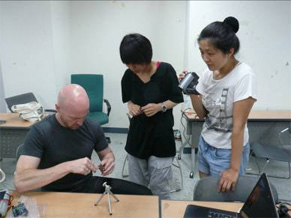
Figure 8: The “Switch-Ken” members, Ms. Hasegawa and Ms. Ahn made EyeWriter2.0 with Prof. Powderly
The EyeWriter2.0 that we made will be exhibited at Gwangju Design Biennale in Korea this fall. the Research Center for Ars Vivendi tied up with Prof. Powderly for the development and the spread of Eyewriter1.0 and 2.0 for the future.
the Research Center for Ars Vivendi and the “Switch-Ken” interviewed Prof. Powderly in July 2 (Figure 9). The forthcoming journal Seizongaku/Ars Vivevendi vol. 5 carries this interview.
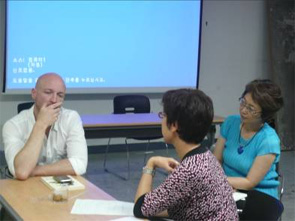
Figure 9 Prof. Matsubara and Dr. Yukiko Kato interviewed Prof. Powderly
Ms. Dosin Shin, the mother of Ms. Hyosuk Ahn, joined our project and helped us bridging the Korean institutions and Ritsumeikan University (Figure 10). We express our special thanks to Ms. Dosin Shin and the parties concerned.
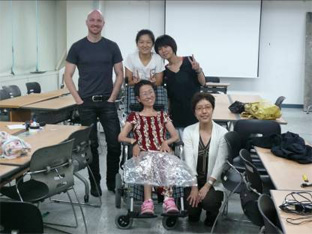
Figure 10: Ms. Hyosuk Ahn and Ms. Dosin Shin with Prof. Powderly on July 3
June 30, 2011 (Gyeong Gi-Do and Seoul, Korea)
- Observation Tour of Gyeong Gi-Do Assistive Technology Research and Assistance Center, and the Korea Disabled People's Development Institute
- Host: Global COE Program Ars Vivendi
July 2 and 3, 2011 (Seoul)
- International Workshop: Art and Assistive Technology”
- Venue: Hongik University, Seoul
- Host: Global COE Program Ars Vivendi
- Co-Host: Hongik University (Prof. James Powderly)
- For observation tour of Gyeong Gi-Do Assistive Technology Research and Assistance Center, and the Korea Disabled People's Development Institute, Dr. Hyunsoo Hong (Project Assistant Professor, The Institute Medical Science, The University of Tokyo) supported us as an interpreter. These projects were supported by the Global COE Program Ars Vivendi, Grants in Aid for Scientific Research “Study on Scientific Technology for Cyborg Ethics” (Academic Year 2011 Representative: Prof. Yoko Matsubara), and Health and Labour Sciences Research Grant (Research for Overcoming Intractable Diseases) “Clinical Preparatory Research concerning Assistive Robots Wearing the Lower Leg which Are Optionally-Controlled by New Medical Equipments, Bioelectric Potential, etc. for Achieving the Therapeutic Effect of Suppressing the Progress of Intractable Diseases of Nerve / Muscle” (Academic Year 2011 Representative: Dr. Takashi Nakajima).



